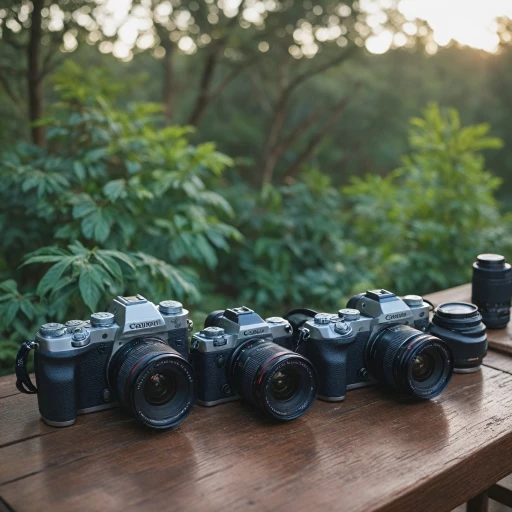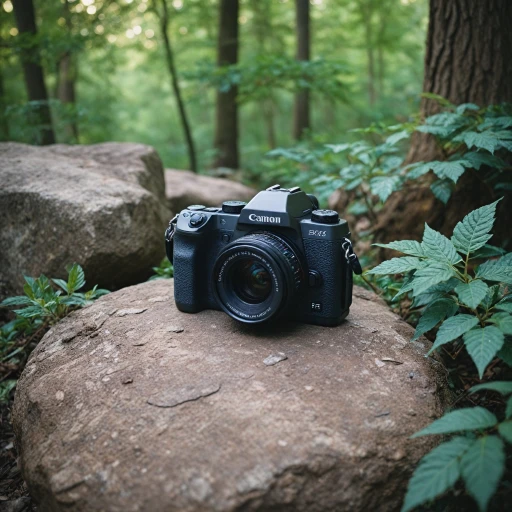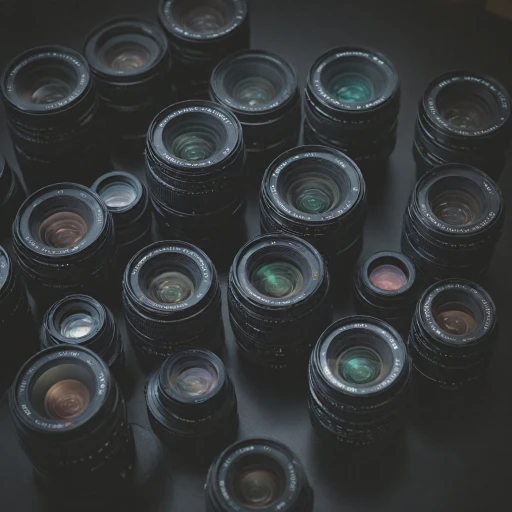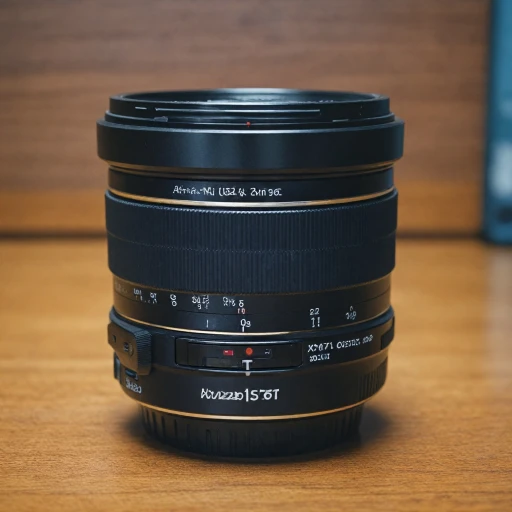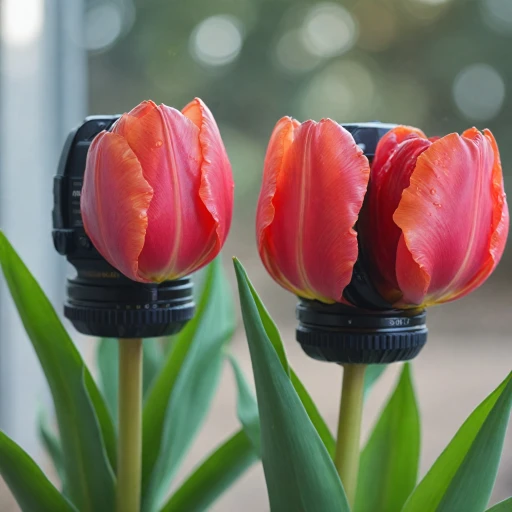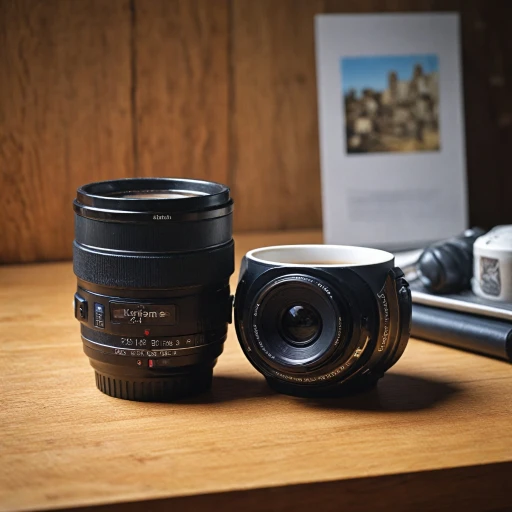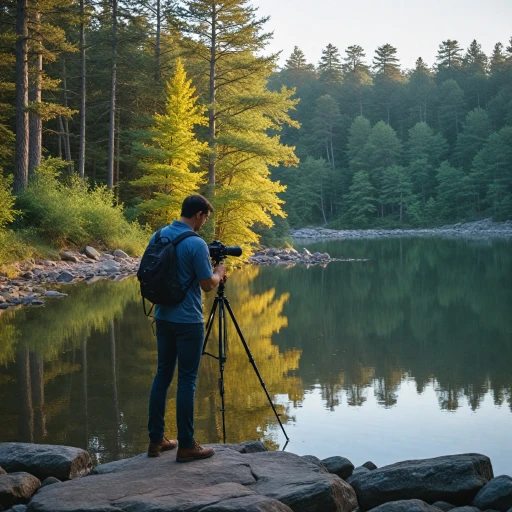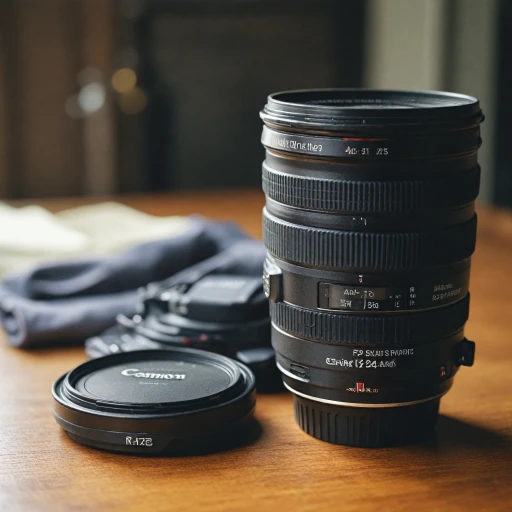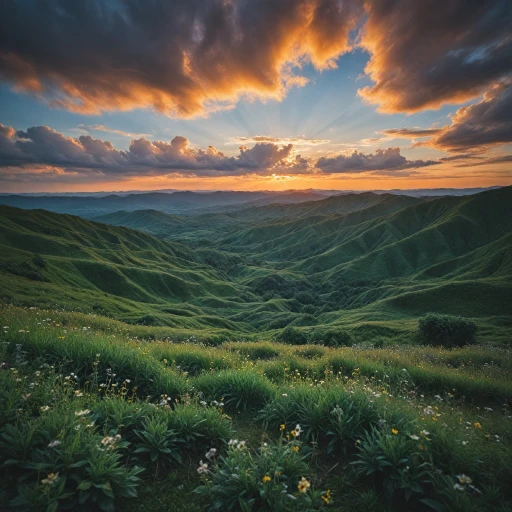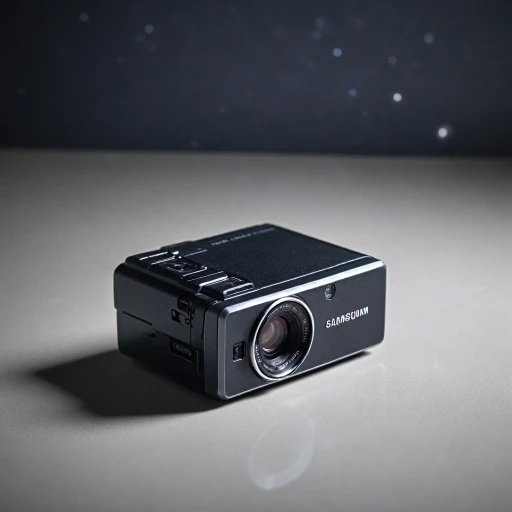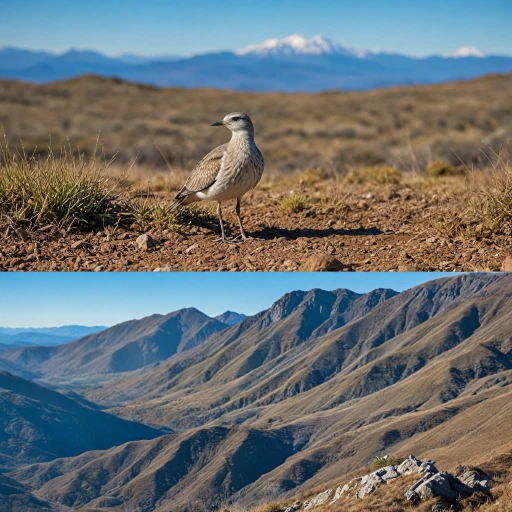
Understanding Fisheye Lenses
Characteristics of Fisheye Lenses
Fisheye lenses are a unique type of lens that maintain a wide angle view, offering an extremely wide, hemispherical image. These lenses are known for their distinct and ultra-wide angle of view. Unlike typical wide angle lenses, the fisheye's ability to render a 180-degree field view can radically transform the perspective in your photography.
What sets fisheye lenses apart is their unconventional angle view. There are two main types: circular fisheye and diagonal fisheye. Circular fisheyes capture a 180-degree angle view across the photo's width, producing a round image that doesn't cover the full frame of the camera, while diagonal fisheyes fill the entire frame with a wide field of view. This can be an excellent choice for certain types of photography, such as landscapes or architecture, where you want a full frame to emphasize the subject.
Technical Insights on Fisheye Lenses
Fisheye lenses often come with a fixed focal length. When you're working with a full frame camera, like a pro-level Nikon or Canon, these lenses offer a unique opportunity to master wide angle photography by stretching the visual elements in a new way. It's crucial to match these lenses with the appropriate image sensor to ensure optimum performance.
The versatility and use of angles in fisheye lenses give photographers the chance to play around with impressive circular and ultra-wide perspectives. Additionally, lens mount compatibility is essential to consider when purchasing for your Nikon or Canon EOS system. It's a common misconception to think such lenses are all expensive; you can find options at various sale prices, offering an affordable way to enhance your creative toolkit.
For a deeper understanding of how different lens systems work together, you might want to explore the compatibility of different systems such as the use of Four Thirds lenses on Micro Four Thirds systems. This kind of compatibility suggests the vast field of innovation that fisheye lenses bring to photography, allowing both novice and professional photographers to expand their creative horizons.
The Creative Potential of Fisheye Lenses
Unleashing Your Inner Artist: The Unique Perspectives of Fisheye Lenses
Fisheye lenses open up an unconventional world of photography through their dramatic, wide-angle view. Unlike traditional wide angle lenses, fisheye lenses offer a highly distorted, spherical image that captures a unique perspective. This distinctive feature allows photographers to explore creative possibilities by providing a different way to view and frame the world.
One of the notable characteristics is their ability to include an expansive field view in one frame. This can be particularly appealing for those using full frame cameras like the Nikon and Canon EOS systems, as the entire circular fisheye effect can be fully appreciated. The camera’s image sensor plays a crucial role in this, ensuring every detail is captured clearly across the wide angle.
With traditional lenses, lines appear straight; however, fisheye images are characterized by their distinctive barrel distortion. This can be manipulated to create an eye-catching, almost surreal effect. The fish eye effect can add an artistic flair to architectural photography, transforming mundane structures into compelling compositions.
Additionally, fisheye lenses can add a novel twist to landscape photography. By capturing more of the scene, they can convey the grandeur of vast spaces or emphasize a dramatic foreground. This creates an immersive experience, allowing the viewer to feel like they are part of the picture.
The creative applications of fisheye lenses extend beyond traditional photography genres. In video, these lenses can inject energy and a sense of motion. Whether shooting skateboarding tricks or a music video, the dynamic viewpoint adds depth and dynamism.
Exploring the creative potential of fisheye lenses is all about embracing their unique distortion. Much like exploring new wildlife techniques with lenses for capturing nature's wonders, it’s crucial to understand how they change the very essence of each image. Whether you are a novice photographer or a seasoned pro, experimenting with these types of lenses can elevate your work by injecting new perspectives and dimensions into your photography.
Choosing the Right Fisheye Lens for Your Camera
Navigating the Fisheye Lens Market
When it comes to choosing the right fisheye lens for your camera, the options can be overwhelming. Whether you're using a Nikon, Canon, or any other brand, understanding your needs and the specifications of different lenses is crucial. First, decide between circular fisheye and diagonal (or full-frame) fisheye lenses. Circular fisheye lenses create an image within a black frame, offering a true 180-degree full view angle, perfect for those ultra wide-angle shots. In contrast, diagonal fisheye lenses cover your entire image sensor, providing a wide angle view that maintains the complete frame. Focal length is another essential factor. Typically ranging from 8mm to 16mm, fisheye lenses with shorter focal lengths capture a wider field view, creating dramatic curvature. Longer focal lengths may reduce the curvature slightly but still offer a broader perspective compared to standard wide-angle lenses. Mount compatibility is key—ensure the lens fits your camera. Canon EOS, Nikon's FX and DX, and other mounts differ, so check the specifications to avoid any mismatch. For those interested in video, dual fisheye lenses can offer intriguing angles and immersive experiences. Ideal for creative filmmaking, these lenses deliver a unique way to capture 360-degree videos when paired with software that stitches the footage together. Pricing varies widely, from accessible options on sale prices, often seen with entry-level designs, to more expensive pro-grade fisheye lenses crafted with superior glass for high-end photography. Ultimately, the perfect lens will align with your camera system, whether it's a medium format camera or a more compact option. Always consider what you aim to capture—are you exploring landscapes, indulging in architectural photography, or pushing the limits of creative expression? Making these decisions will steer you toward the right fisheye lens and enhance your photography adventure. For more insights on maximizing your equipment, consider the significance of the right light stand to complement your lens setup and improve your shooting results.Techniques for Shooting with a Fisheye Lens
Harnessing the Power of Ultra-Wide Vision
With your fisheye lens mounted on your camera, there's an exhilarating world of photography waiting to be explored. As a photographer, understanding how to use these unique lenses to capture intriguing images can significantly enrich your creative repertoire.Mastering Composition with Circular and Diagonal Fisheyes
Fisheye lens photography isn't just about capturing a vast field view; it’s also about composing compelling images within that frame. A circular fisheye can provide a 180-degree angle view, allowing you to encapsulate the entire scene within a distinctive, spherical image. This can be ideal for capturing large-scale venues or environments, making them suitable for both landscape and architectural photography. Diagonal fisheyes, on the other hand, maintain the rectangular frame of your camera sensor while still offering a wide perspective. They are excellent for photographers looking to emphasize depth and create unique distortion effects that draw the viewer’s eye.Optimizing Your Equipment Settings
Understanding your lens’s focal length is crucial in making the most of your fisheye photography. Most fisheyes have a very short focal length, which contributes to their expansive angle view. This ultra-wide characteristic demands careful focus adjustments, especially when you aim for sharpness throughout the photo. For cameras like the Canon EOS and Nikon systems, enabling wide-angle image stabilization can also be beneficial. It helps mitigate the challenges associated with manipulating such a wide field of view, especially in handling video footage.Maneuvering in Low Light and Challenging Conditions
Pro photographers often encounter varying lighting environments, and fisheye lenses are no exception regarding their adaptability. Low light conditions can be mitigated by using a lens with a wide aperture, which allows more light to hit the image sensor. Many fisheye lenses are designed with low-light capabilities in mind, often one of the factors influencing their sale price. Shooting in challenging conditions also calls for practical use of other camera features, such as adjusting your ISO and shutter speed to maintain exposure consistency.Strategies for Dynamic Fisheye Photography
Utilizing the pro angle lens advantages offered by fisheye lenses means thinking creatively about your compositions. Incorporate movement into your frame to take advantage of the dynamic effect these lenses offer. Tilt your camera slightly for a unique angle, bringing a fresh perspective to ordinary scenes. Ultimately, the potential of fisheye lenses in photography genres is substantial — from urban scenes captured with diagonal fisheye lenses to dramatic portraits viewed through a circular fisheye. Experiment with different cameras and lens combinations to find the right fit that represents your vision, keeping in mind that creative possibilities are endless with the right techniques.Post-Processing Fisheye Photos
Refining Your Fisheye Images
When it comes to working with fisheye lenses, post-processing can be a powerful tool to enhance your images or correct some of the inherent distortions. While these lenses offer an ultra wide-angle view and a unique circular fisheye effect, the resulting photos may not always meet your expectations straight out of the camera. Here are some steps and tips to optimize your fisheye photography results:- Correcting Distortion: Although the signature fish-eye effect is often the desired outcome, there are instances when you might want to moderate it. Software like Adobe Lightroom and Photoshop provide tools to adjust barrel distortion, straighten horizons, and refine perspective. Play around with lens correction features to retain the wide field of view while minimizing unwanted distortion.
- Playing with Crops: Depending on the composition, you might want to crop your image to shift focus or remove peripheral distractions. A well-chosen crop can highlight the most interesting parts of your photos and emphasize the fisheye perspective.
- Enhancing Colors and Contrast: Fisheye photos sometimes suffer from flat colors. Boosting contrast and saturation can help bring images to life. Adjust white balance to match the mood of your photography—use these tweaks to project the feel you had in mind while shooting.
- Utilizing Filters and Effects: Consider applying creative filters or effects to augment the playful nature of fisheye images. Cloudy skies, reflections, and vibrant scenes all benefit from filters that enhance the dynamic range and color depth.
- Experimenting with Overlays: Layering composites, adding text, or integrating other visual elements can add an additional level of creativity to your fisheye lens photos. It allows you to transform an already striking image into a piece of art.
Fisheye Lenses in Different Photography Genres
Versatile Applications in Photography
Fisheye lenses have carved a niche across various photography genres, offering unique perspectives and creative possibilities. Their ultra wide angle view can transform ordinary scenes into extraordinary images, making them a favorite among professionals and enthusiasts alike.
Landscape Photography
In landscape photography, the expansive field view of a fisheye lens captures more of the scene, providing a sweeping perspective that standard lenses can't match. This can be particularly effective when photographing vast natural vistas or urban landscapes, where the lens' ability to include more of the frame enhances the overall impact of the image.
Architectural Photography
Architectural photographers often use fisheye lenses to emphasize the grandeur and scale of buildings. The wide angle lens can capture the entirety of a structure within a single frame, offering a dramatic and immersive view. However, care must be taken to manage distortion, which can be both a creative tool and a challenge.
Action and Sports Photography
For action and sports photography, fisheye lenses provide an engaging way to capture dynamic scenes. The wide angle view allows photographers to get close to the action while still encompassing the broader context, resulting in images that are both energetic and immersive.
Astrophotography
Astrophotographers benefit from the lens' ability to capture the night sky in its entirety. With a full frame fisheye lens, you can photograph the entire celestial dome, creating stunning circular fisheye images that showcase the stars and planets in a unique way.
Creative Portraits
While not traditionally used for portraiture, fisheye lenses can add a creative twist to portraits. By playing with distortion, photographers can create whimsical and exaggerated images that stand out from conventional portraits. This approach requires a good understanding of the lens' characteristics to achieve the desired effect.
In each of these genres, the choice of lens, whether it's from Nikon, Canon, or another brand, can influence the outcome. Factors such as focal length, mount compatibility, and price are crucial considerations when selecting a fisheye lens for your camera system, be it a Canon EOS or a Nikon model.


